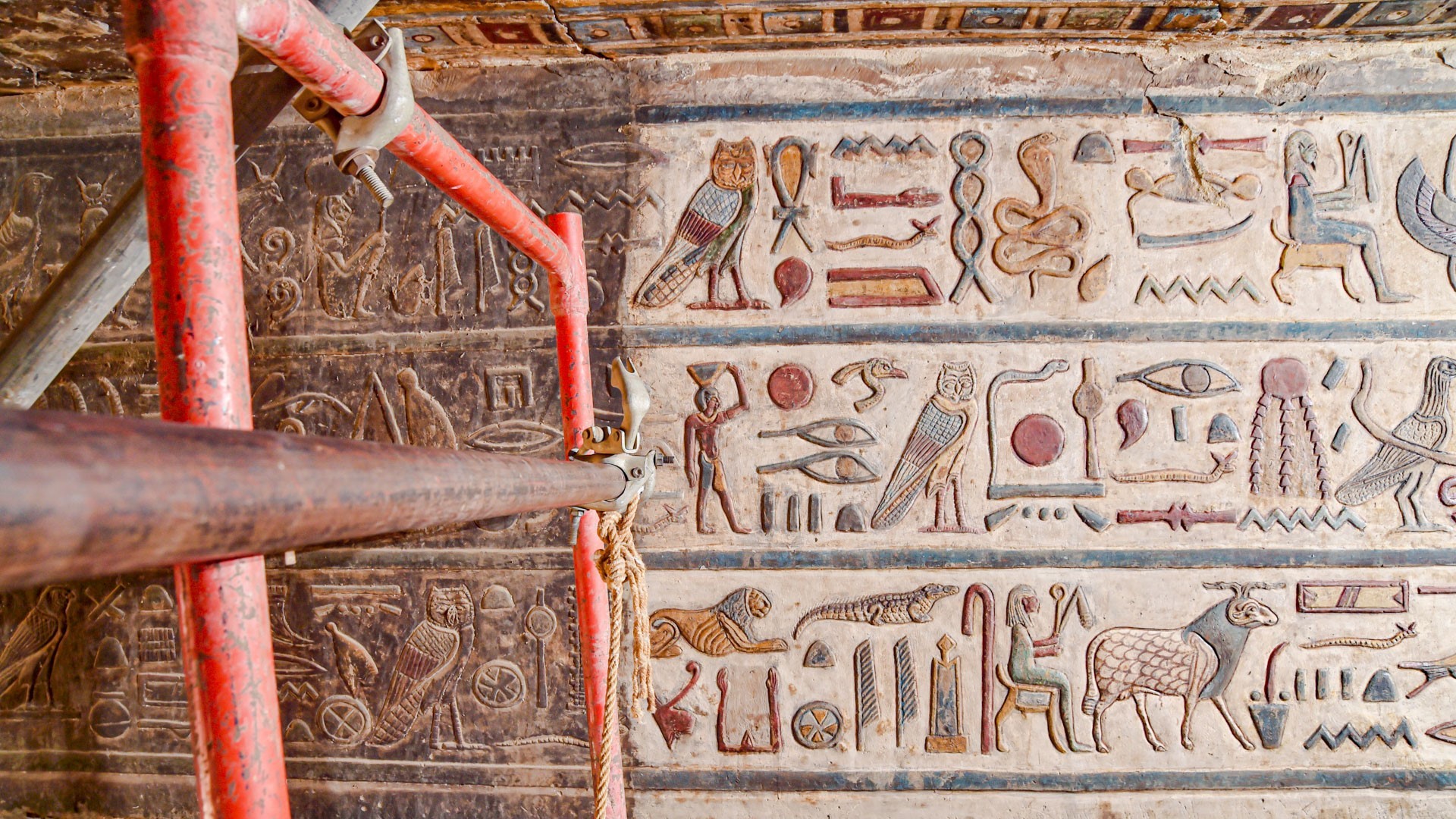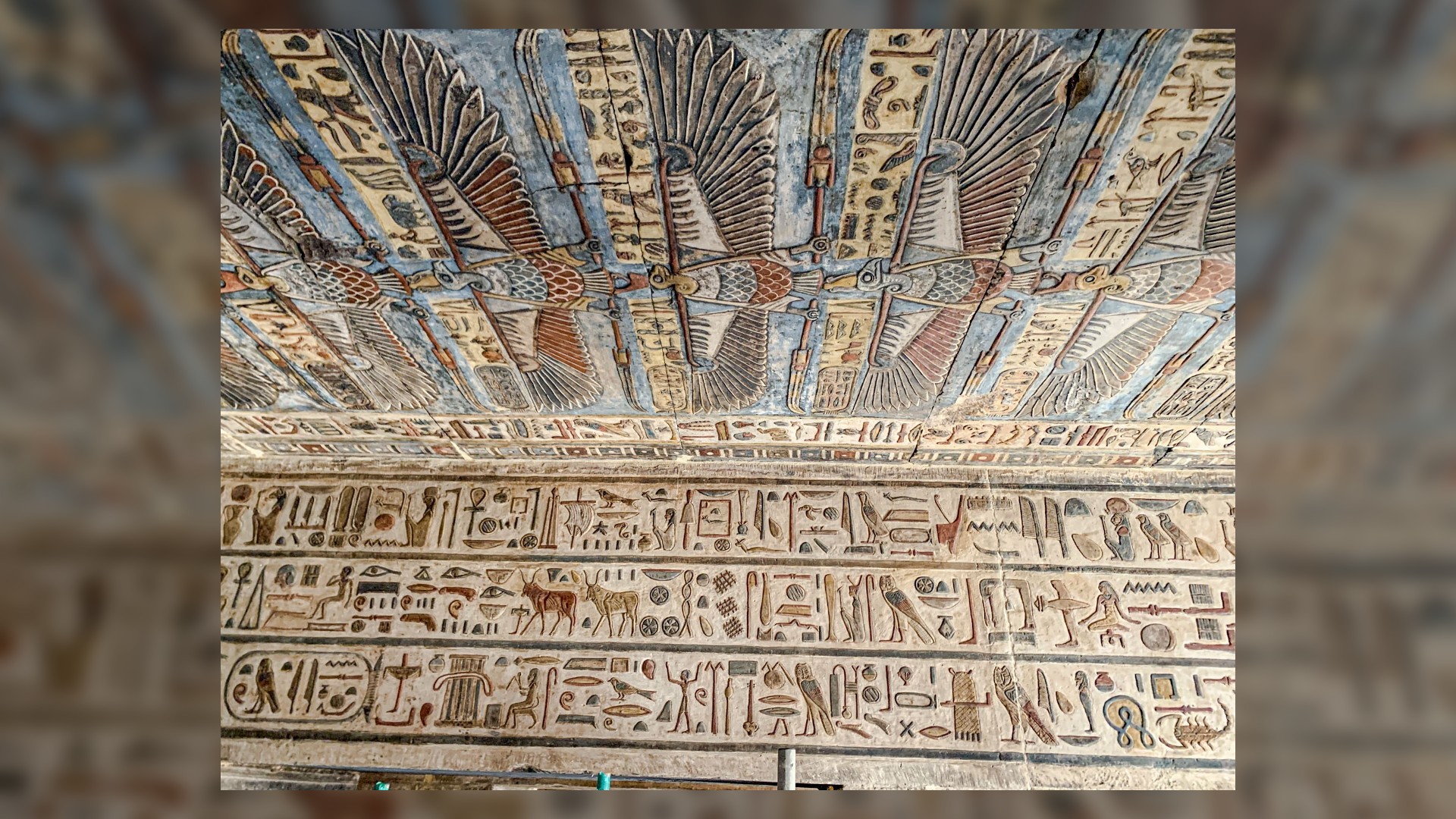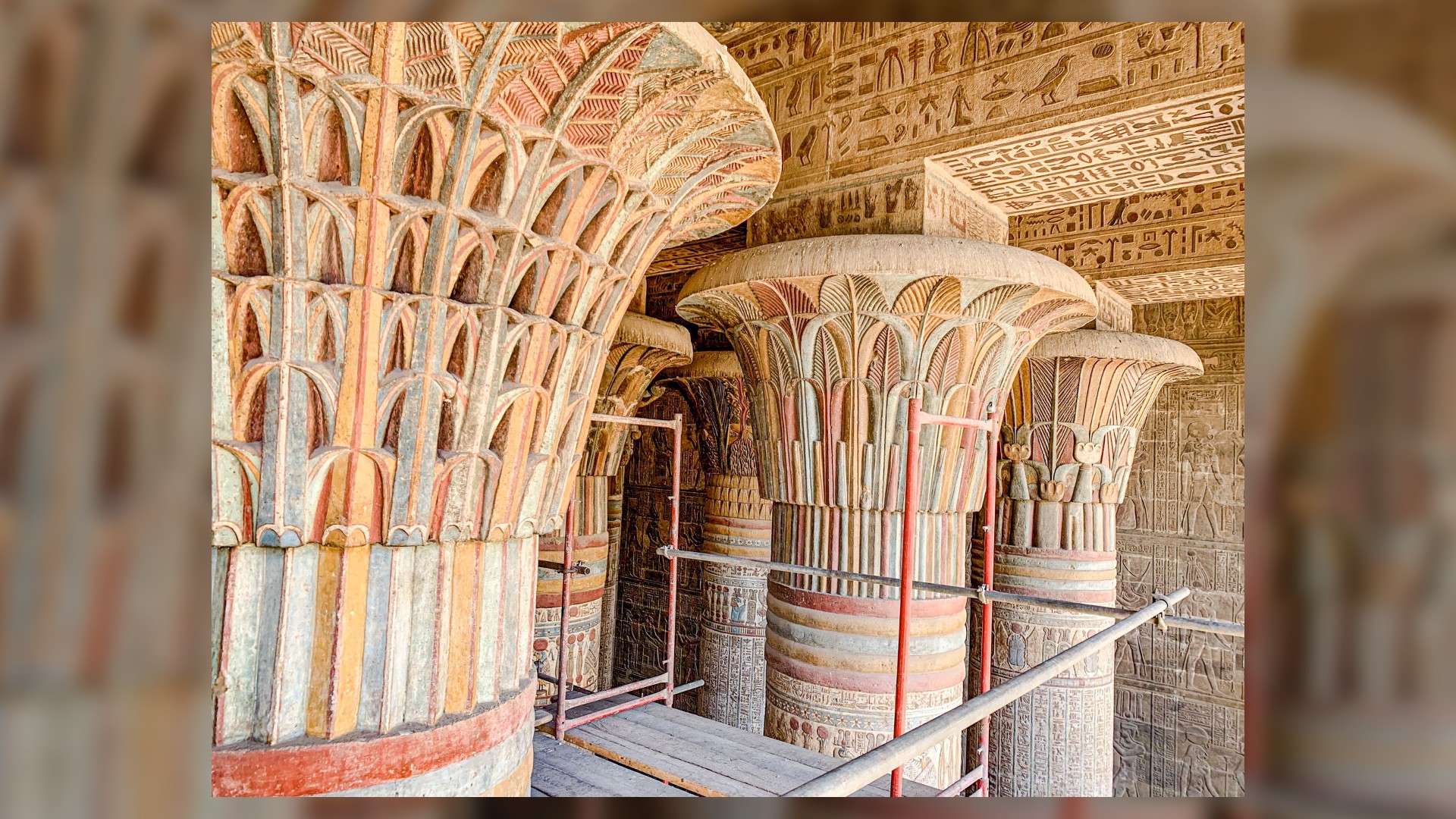Gorgeous paintings of ancient Egyptian goddesses revealed under layers of bird poop
The goddesses were depicted as vultures.

Archaeologists have discovered 46 stunning depictions of goddesses from ancient Egypt, which were previously buried under layers of soot and bird poop. Artists created the detailed and colorful frescoes on the ceiling of a temple nearly 2,200 years ago.
The temple is located at Esna, a city in southern Egypt that is about 37 miles (60 kilometers) south of Luxor (ancient Thebes). It is dedicated to Khnum, an ancient Egyptian god associated with fertility and water.
Hieroglyphs on the temple show that it was used for nearly 400 years — between the time of pharaoh Ptolemy VI (reign 180 B.C. to 145 B.C.) and the Roman emperor Decius (reign A.D. 249 to 251), Christian Leitz, a professor and director of the Department of Egyptology at the University of Tübingen in Germany, told Live Science in an email. Leitz is a member of the Egyptian-German team that is conserving and documenting the temple.
Related: What did ancient Egypt's pharaohs stash inside the pyramids?

Over the centuries after the temple was abandoned, its colorful paintings became coated with soot and dirt. The Egyptian-German team cleaned the paintings with alcohol, revealing their vivid colors once again, Leitz said.
The team found that the temple's paintings depict Nekhbet, a goddess who is depicted like a vulture, and Wadjet, a cobra-headed goddess who has wings. Nekhbet is shown wearing the white crown of Upper Egypt and Wadjet wears the crown of Lower Egypt. Nekhbet and Wadjet were sometimes referred to by the ancient Egyptians as the "two ladies."
"The glory of the color used in the depictions of the 'Two Ladies', Nekhbet and Wadjet, which has now been revealed, was previously unknown to experts," according to a statement released by the University of Tübingen, which noted that the soot and dirt on the paintings prevented them from being properly studied.
Sign up for the Live Science daily newsletter now
Get the world’s most fascinating discoveries delivered straight to your inbox.
Nekhbet and Wadjet were frequently depicted in ancient Egypt as "protector deities," Leitz said. The "extraordinary [thing] here are the colours" of the paintings, he added.

Only the vestibule (also known as the pronaos) of the temple survives today, according to the statement, which described the vestibule as measuring 121 feet (37 meters) long, 66 feet (20 m) wide and 49 feet (15 m) tall. The ancient Egyptians might have built the vestibule sometime after other parts of the temple were constructed, the statement noted. Work is ongoing and the team will be publishing details about their finds in the future.
Cleaning and conservation of the paintings are still underway. "More than half of the ceilings and eight of the 18 columns have now been cleaned, conserved and documented," the statement said.
The Egyptian-German team is led by Hisham el-Leithy of the Egyptian Ministry of Tourism and Antiquities and Ahmed Emam, who is also with the ministry, is overseeing the cleaning.
Originally published on Live Science.

Owen Jarus is a regular contributor to Live Science who writes about archaeology and humans' past. He has also written for The Independent (UK), The Canadian Press (CP) and The Associated Press (AP), among others. Owen has a bachelor of arts degree from the University of Toronto and a journalism degree from Ryerson University.










